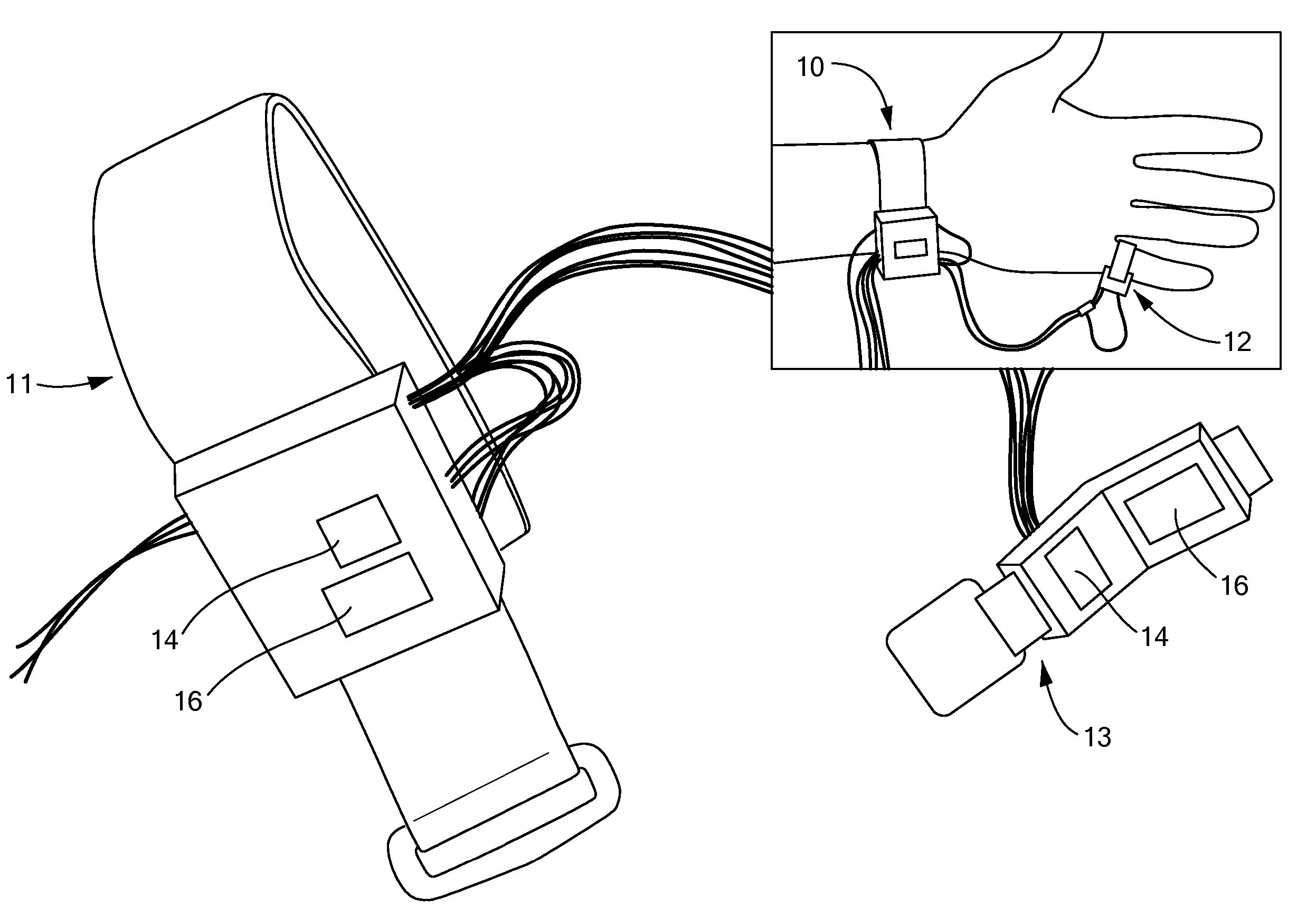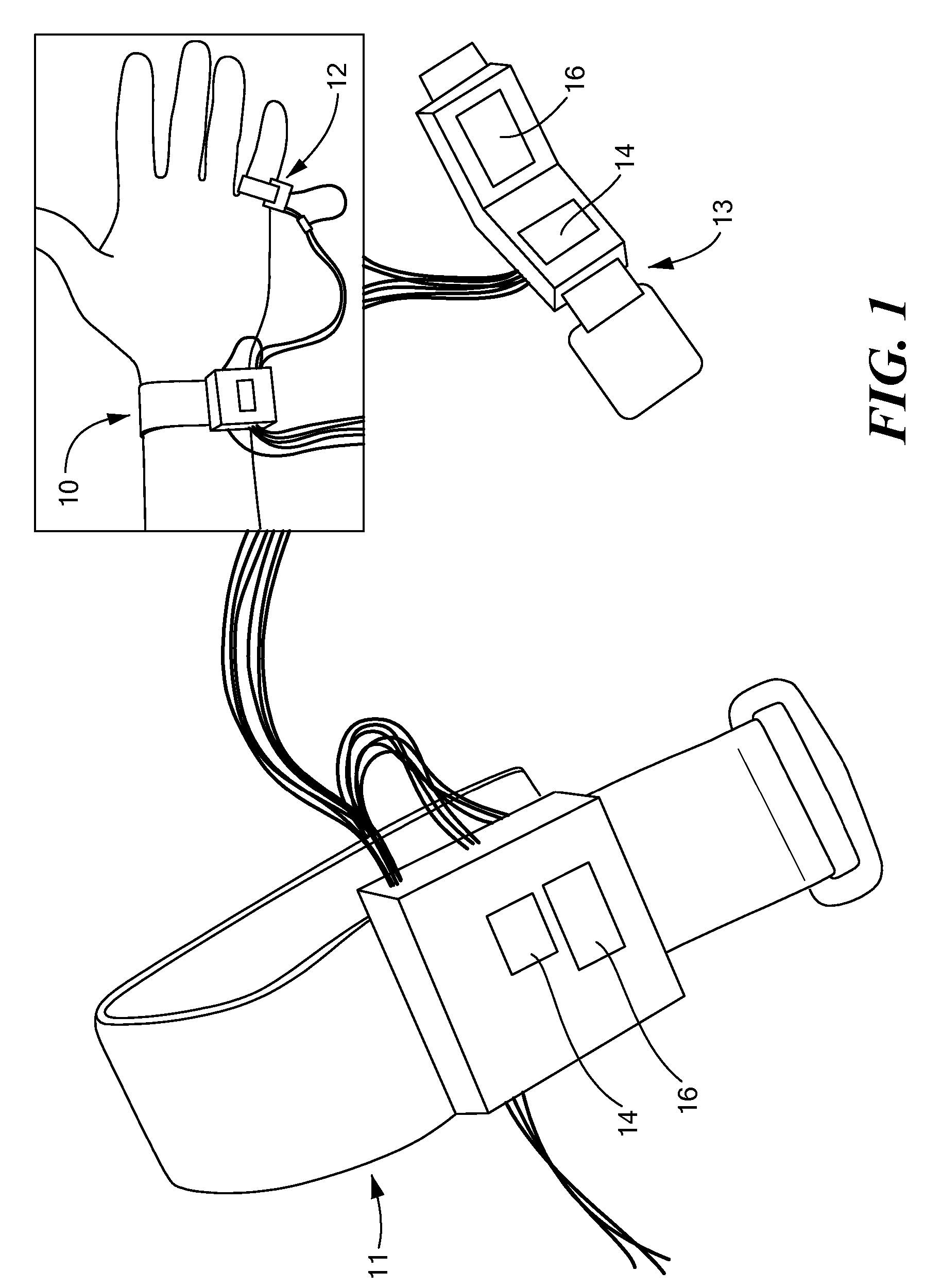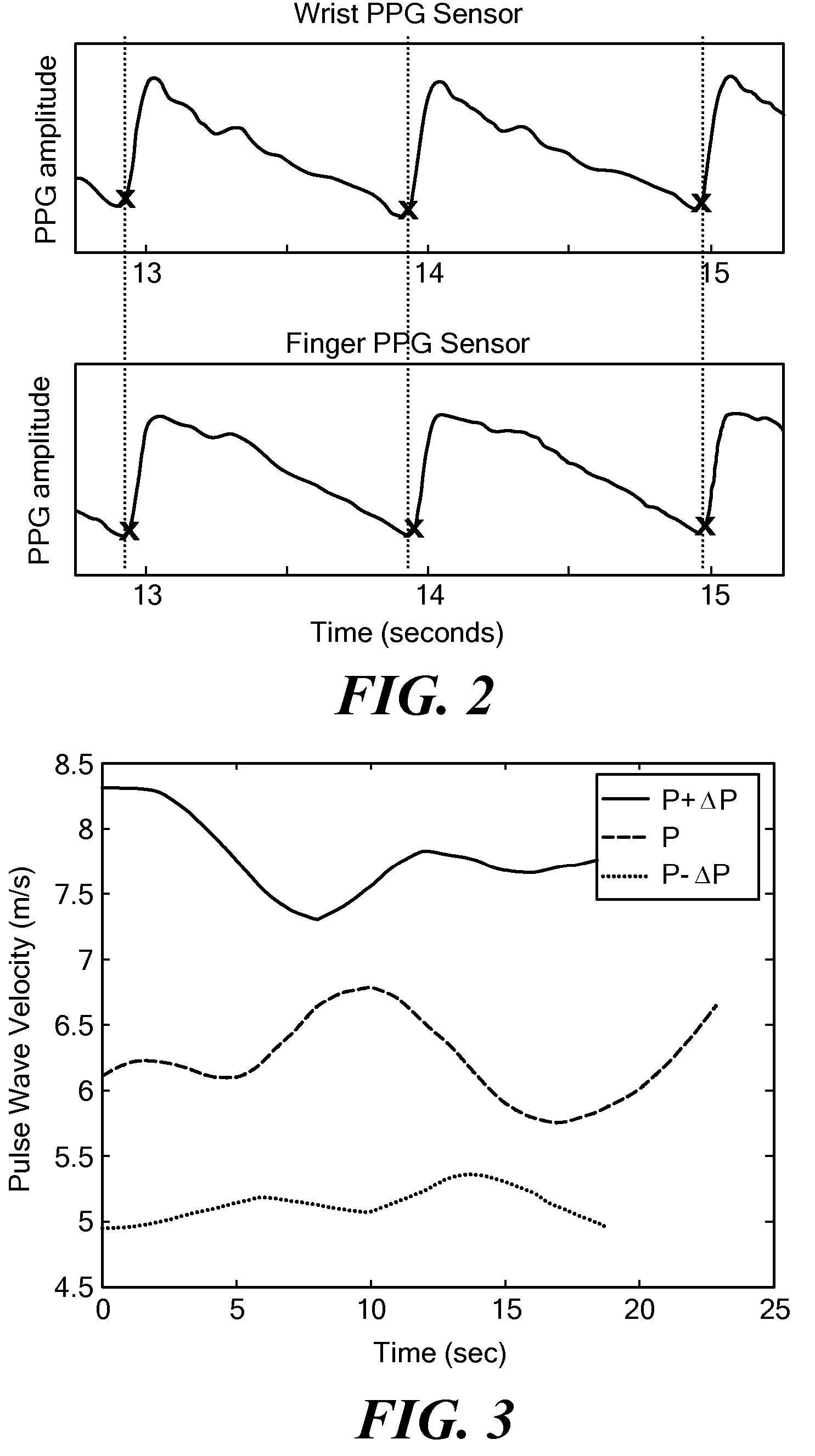However, a significant challenge to realizing true non-invasive blood pressure (NIBP) measurement remains the problem of accounting for the unknown tension in the underlying
arterial wall: If one simply measures pressure external to an
artery (for instance, on the overlying
skin), one is measuring the balance of intra-arterial pressure and the rapidly varying
arterial wall tension.
Yet, there is no optimal solution to truly wearable NIBP measurement.
While they are the standard-of-care, such devices nonetheless have shortcomings, including: (i) their circumferential compression of the extremity is uncomfortable, causing bruising or interrupting sleep; (ii) they are very susceptible to motion, since motion artifact cannot be distinguished from arterial volume pulsations, (iii) they are not readily miniaturizable so the device tends to be bulky, and (iv) overall, their accuracy versus a gold-standard is often inadequate.
A more convenient version of the oscillometric
cuff fits on the
wrist, but measurement errors can arise if (v) the
wrist is at a different vertical level from the heart, or (vi) if the patient has distal arterial fixed occlusions or
vasospasm.
The Vasotrac Device and “Reverse
Oscillometry”: MedWave's BP sensor places a small “
balloon” over the
radial artery, increases the
external pressure applied to the underlying
radial artery, and measures the volumetric pulsations in the “
balloon.” It is therefore a variation of standard
oscillometry, and the company describes the methods as “reverse
oscillometry.” The device is unsuitable for
ambulatory monitoring because of its size and power requirements, moreover, it is motion-sensitive, like other oscillometric methods.
In numerous instances, published works may refer to this measurement modality as ‘photoplethysmography’, although such usage is imprecise, and it can leave the incorrect impression that the PPG and
arterial blood pressure (ABP) signals are interchangeable.
Yet it requires a bulky, power-thirsty actuation
system to drive the pneumatic
cuff.
(2000), “No one has succeeded in realizing a reliable blood pressure monitor when only the
pulse wave velocity or pulse
arrival time is used.” There are several reasons for these difficulties:In addition to systolic BP and diastolic BP, PWV is also a function of the subject's vascular physiologic state.Furthermore, PWV is also a function of the frequency content of their
pulse waveform.Raising and lowering the arms changes the
hydrostatic pressure within the extremity, so PWV may be unreliable in any position except supine.In a canine study, PWV was found to remain constant for all mean BP's below 100 mmHg.
So PWV may not correlate with BP for individuals close to, or less than, the normotensive range (e.g. it may be difficult to detect over-medication, or monitor
heart failure patients, with PWV).PWV is distance divided by
pulse transit time, but it is difficult to measure the distance accurately, or keep the distance constant.To measure
pulse transit time, a proximal and distal measurement are necessary.
But the electrocardiogram (ECG) is a problematic marker of pulse onset, perhaps in part because of variable electromechanical delays.
The fact that PPG measurements require the use of two distinct PPG sensors has also proven problematic.
Arterial tonometer solutions: Tonometers are very difficult to use, even in controlled laboratory conditions, and thus they have no role in
ambulatory blood
pressure measurement.
These conditions are so difficult to achieve in practice that the one commercially available tonometer comes with a separate oscillometric
cuff to calibrate the unreliable (in terms of absolute arterial pressure) tonometer unit.
 Login to View More
Login to View More  Login to View More
Login to View More 


